
Weaving Invaluable Connections in Ogimi, the Village of Longevity Recognized Worldwide.

宮城 健隆
Kenryu Miyagi
Oogimi [Okinawa]
Kenryu Miyagi
Born in Miyagi Prefecture. After retiring from a steel company in Tokyo, he moved to Ogimi Village in Okinawa Prefecture, an important place for his family's identity. He founded a local council and in 2010, established the NPO Ogimi Marugoto Tourism Association. Focusing on educational homestays, he creates opportunities for people to experience the nature and culture of Ogimi.
In 2021, the northern part of Okinawa Island, abundant in natural beauty, was registered as a World Natural Heritage site. Within this area lies Ogimi Village, known as one of the world's leading "Villages of Longevity," recognized by the World Health Organization (WHO). Besides the relaxed living environment and locally-sourced diet, having a "purpose in life" is also said to be key to longevity. One aspect of the villagers' purpose in life involves educational homestays that welcome school children from urban areas on field trips. We spoke with Miyagi Kenryu, the president of the NPO Ogimi Whole Tourism Association, which has welcomed over 15,000 people in its educational homestay program in Ogimi.
Deciding to live in Ogimi, rooted in the identity of a distinguished family lineage, after the loss of his mother.
“I was born and raised in the Tohoku region, but my roots are in Ogimi, Okinawa,” says Mr. Miyagi.
His family is renowned for introducing oyster farming to Japan and producing the “Oyster King of the World,” Miyagi Shinsho. The family’s legacy continued in Ogimi.
Mr. Miyagi himself was born while his family was expanding its oyster farming business in Miyagi Prefecture, now one of Japan’s leading oyster-producing areas.
Even while living in Tohoku, he maintained a connection with Ogimi, where his family’s identity remained.
“When I was young, Okinawa had not yet been returned to Japan from the United States. I needed a passport to visit, but I went to Ogimi almost every year. It’s a place with the sea, mountains, and rivers, rich in nature. I always thought it was a tropical paradise unique in Japan.”
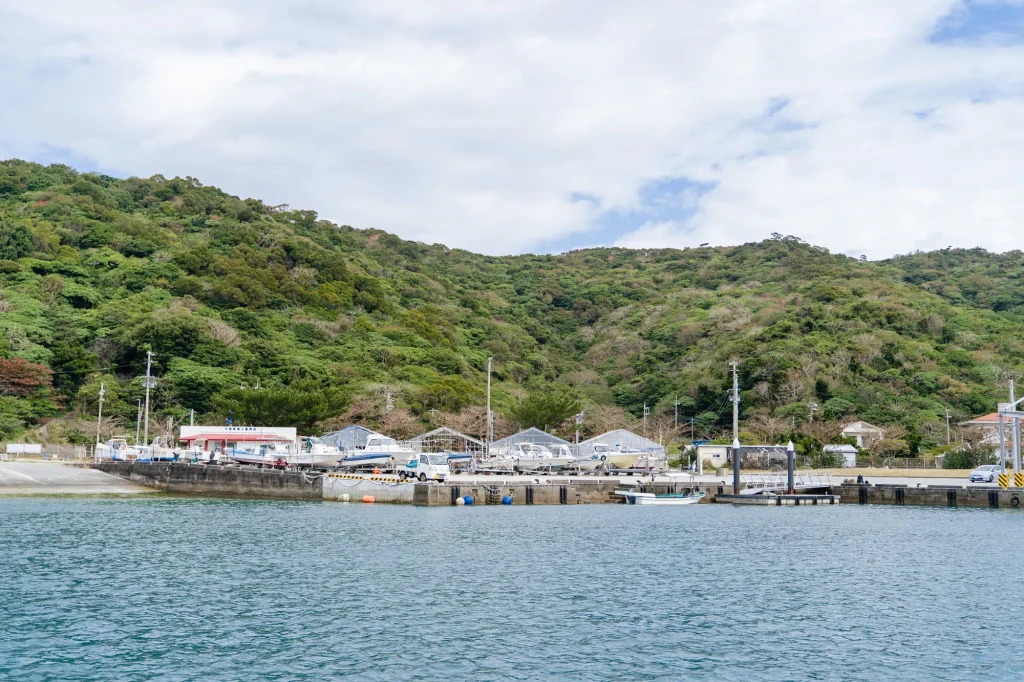
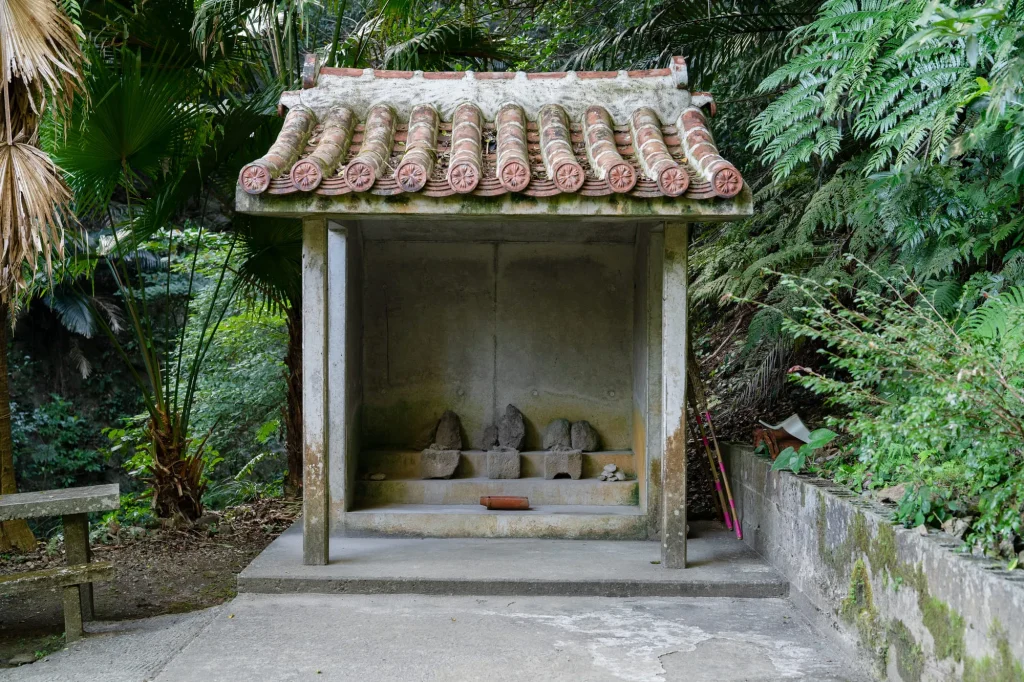
After moving to Tokyo for his studies and eventually working for a steel company, Mr. Miyagi retired with the plan of enjoying a leisurely life of golf with his wife. However, a turning point came with his mother’s passing at the age of 103.
“Ogimi is known as the ‘Village of Longevity,’ and it certainly lived up to its name. But by then, all my siblings had moved away from Ogimi. There was a sense of crisis that our family’s connection with Ogimi might be severed. I decided to protect our family identity and told my family, ‘I will live my life in Okinawa.'”
In 2004, Mr. Miyagi and his wife moved from Tokyo to Ogimi. There, he began to appreciate the region’s potential anew.
“For the first year or two after moving, I traveled around Okinawa. During those travels, I deeply felt the richness of nature in the northern part of the main island, including Ogimi. However, at the time, the environment for welcoming tourists was still being developed. I thought it would be great if more people could come to Ogimi and experience these resources.”
As someone inheriting his family’s pride, Mr. Miyagi commits himself to Ogimi.
While living in Ogimi and realizing the value of the region, Mr. Miyagi found himself on the stage of community development.
“A junior from my university, who was in Ogimi, invited me to a local meeting. Everyone there had strong desires to improve things but couldn’t take action. When I asked why, they said it was hard to take risks because of their deep local ties. That’s when they turned to me, an outsider who had moved in, and asked, ‘Mr. Miyagi, will you join us?’ I decided to contribute my part.”
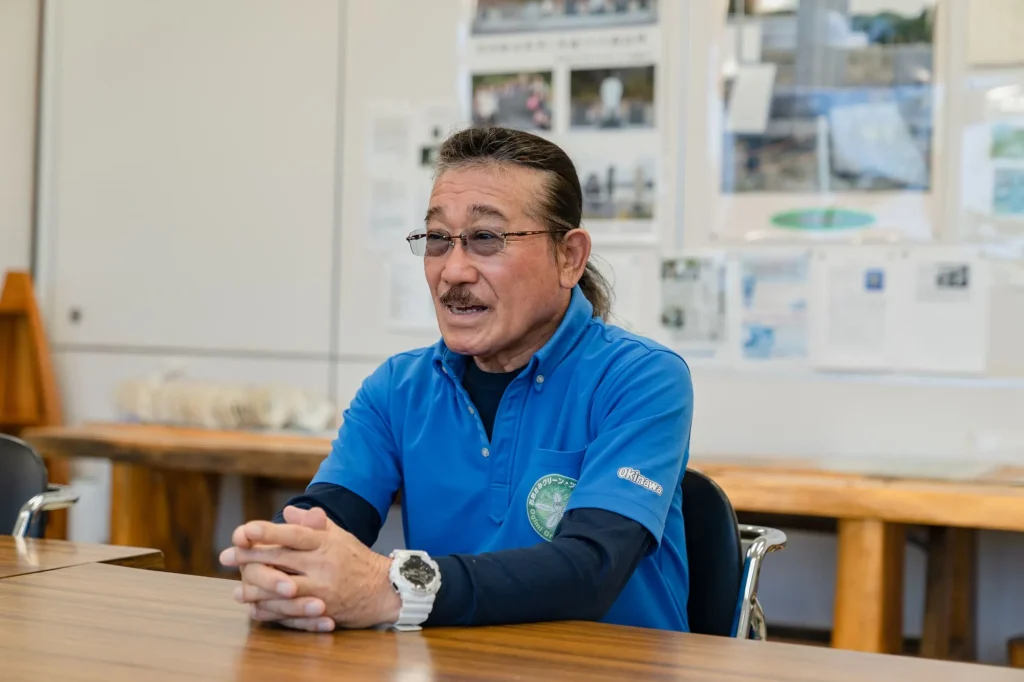
Despite being in a position to enjoy a peaceful retirement life in nature-rich Ogimi after leaving the urban setting, Mr. Miyagi was driven by the pride of his distinguished family lineage.
“There was a sense of duty to uphold the achievements and pride of the Miyagi family. Since we inherited a place so important to our clan in Ogimi, I decided to make a significant impact there. I’ve always been the type to pursue goals with full force.”
Mr. Miyagi then played a central role in establishing a local council and founded the NPO Ogimi Whole Tourism Association in 2010. Since then, they have developed various projects centered around educational homestays, with over 15,000 participants to date.
Creating “purpose in life” through educational homestays in Ogimi, the Village of Longevity.
So, what kind of place is Ogimi, where Mr. Miyagi decided to live?
“There are four keywords for Ogimi. The first is the ‘Village of Longevity.’ It’s a region known for its longevity, selected as one of the world’s five ‘Blue Zones.’ The second is ‘The Village of Bashofu.’ This refers to traditional textiles made from fibers of the Itobasho plant, designated as an Important Intangible Cultural Property of Japan.
The third is ‘The Village of Shikuwasa.’ Ogimi boasts the highest production of Shikuwasa citrus fruit in Okinawa.
Lastly, ‘The Village of Bunagaya.’ ‘Bunagaya’ refers to forest spirits, also known as Kijimuna. Ogimi is one of the few places where these nature-loving spirits reside.”
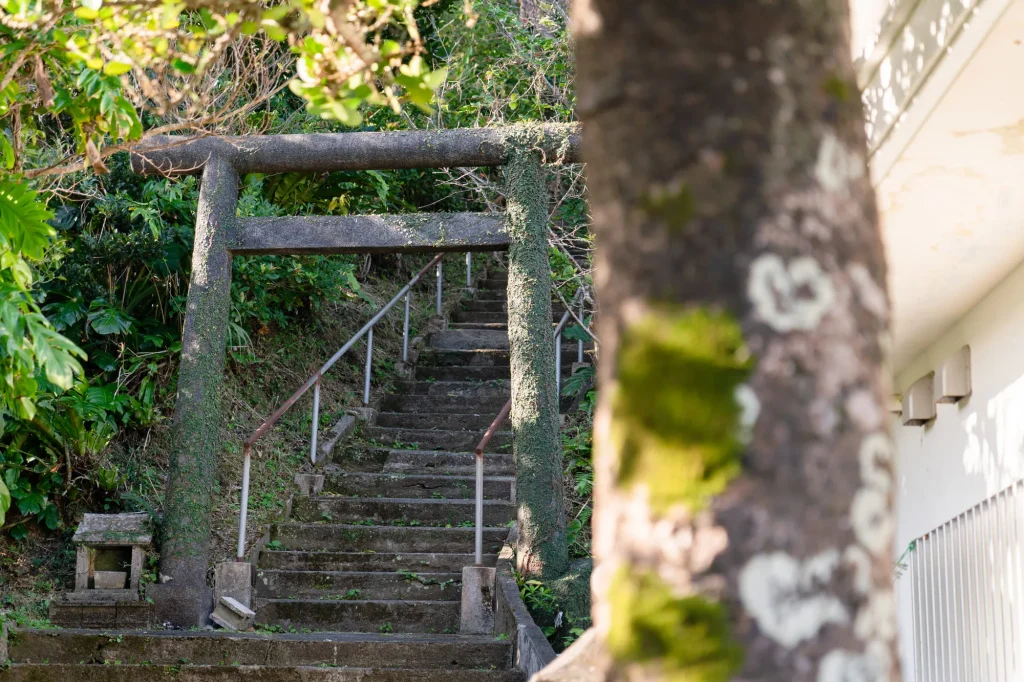
The concept of “Village of Longevity” is particularly notable. Ogimi has an aging rate of 37.1%, significantly higher than the national average of 28% (as of 2020), with about one in seven villagers being over 80 years old. In 1996, it was recognized by the World Health Organization (WHO) as the “World’s Number One Longevity Region.”
Why do people live so long here? Mr. Miyagi has a hypothesis.
“I think it’s not just the stress-free environment and the rich local diet, but ‘having a purpose in life’ is also crucial for longevity.”
Mr. Miyagi’s educational homestay initiative is precisely a project that creates this sense of purpose.
“I was shocked when I participated in an educational homestay program in a neighboring village. It’s about sharing our lives with tourists without any pretense. The hosts get a new stimulus in their daily lives, and visitors get to know the value of Ogimi. It’s a wonderful system, and I immediately wanted to adopt it.”
Mr. Miyagi then started the educational homestay program, not as a tourist attraction but as a way to experience the daily life of Ogimi. The service has been refined with this mindset. Now, several hundred students, mainly from urban schools, visit annually, with about 40 registered homes and farms hosting them. Through these interactions, Mr. Miyagi has seen how the local people become energized.
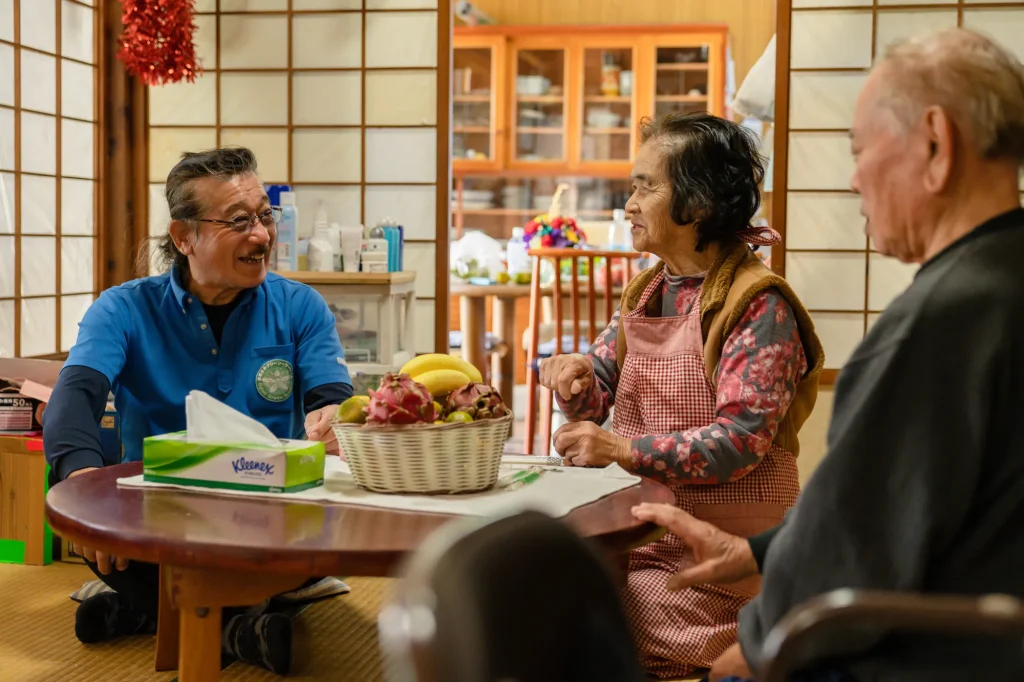
“Most of our registered hosts are retired seniors. Many of them felt a lack of purpose after their children left home. But when children from urban areas visit through our educational homestay program, they become lively. Many have told me, ‘Mr. Miyagi, the kids who visited recently really energized me.'”
(※) As of 2020. Reference: https://jmap.jp/cities/detail/city/47302
Visitors and Hosts:Each Giving and Receiving Energy
As of 2023, Mr. Miyagi plans to host educational homestays for nearly 60 schools. He reiterates the value of this initiative.
“Children who visit Ogimi are often nervous at first. But as they interact with the locals, who treat them like their own children, they gradually open up. When leaving the village, they often say ‘Thank you, uncle and auntie’ with tears in their eyes. Such encounters are precious. Both the visitors and the hosts give and receive energy. That’s the value of the educational homestay.”
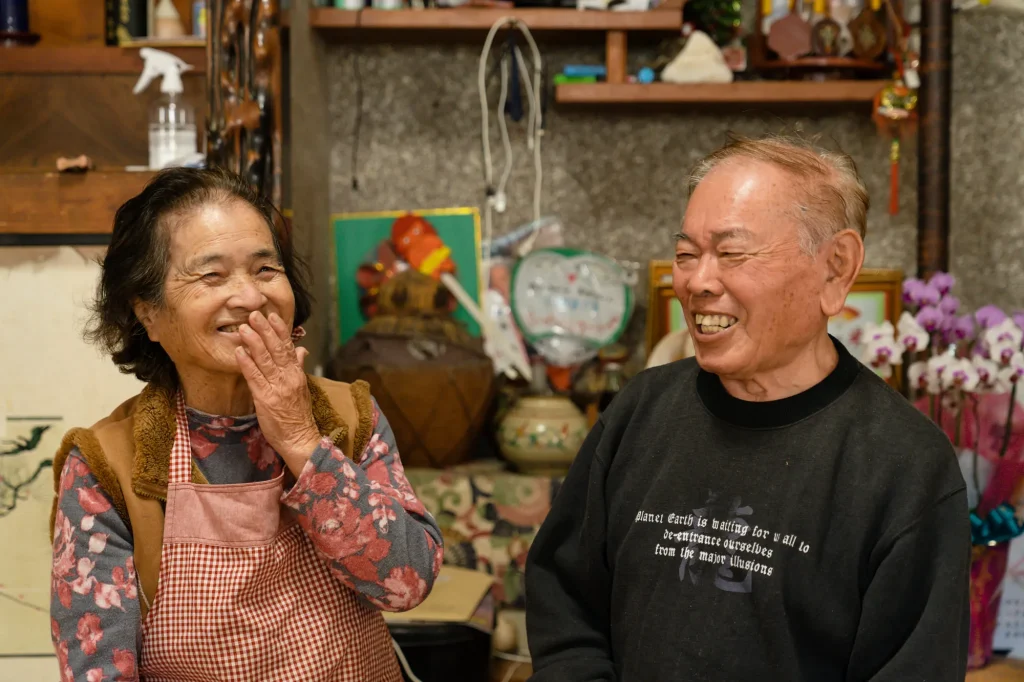
After over a decade of this initiative, strong connections have formed between the visiting children and Ogimi.
“This educational homestay is not just a one-time visit. We hope Ogimi becomes a second hometown for these children. In fact, many come back to visit during summer vacations or even after becoming adults. We always say ‘Come back again’ instead of ‘Goodbye,’ and ‘Welcome back’ when they return. We want to provide another place for these children to belong.”
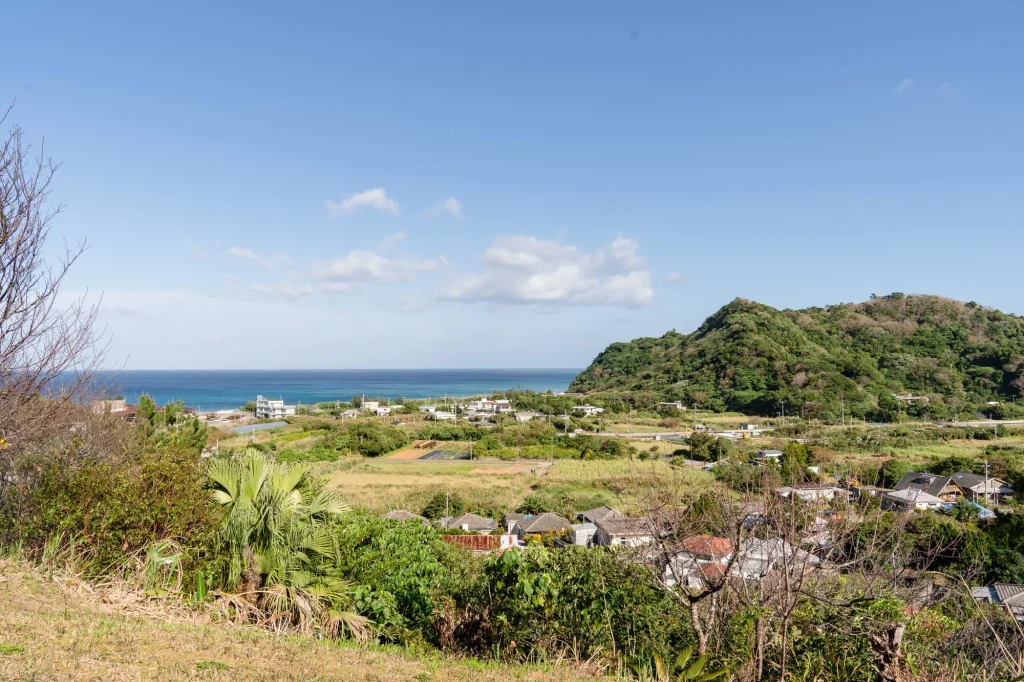
Finally, we asked Mr. Miyagi about what he wants to pass on to the future.
“In 2021, the northern part of Okinawa Island, including Ogimi, was registered as a World Natural Heritage site. We live in harmony with the rich natural environment of the sea, mountains, and rivers. Sure, it might be less stimulating than urban areas, but Ogimi has a unique culture and landscape. Even if it’s just a two or three-day stay, I want to continue creating opportunities for people to fully experience these values and attractions.”
Connecting in this Region:
The rich natural environment of Ogimi, its culture, and history shape this area. We hope to continue passing these on through experiences, stays, and interactions. And we want to keep creating opportunities for both visitors to Ogimi and the locals to find happiness.
